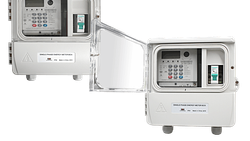With the launch of Artificial Intelligence (AI) products, like ChatGPT, BARD and Ernie, suddenly a glimpse of AI is available for everyone. For sure, where is light, there is shadow. For usage in power grids, I see the most efficient approach by adapting machine learning.
What is Artificial intelligence, and how does it work?
Artificial Intelligence (AI) is a branch of computer science that focuses on creating machines that can perform tasks that would normally require human intelligence to complete. AI systems are designed to learn from experience, adjust to new inputs, and perform human-like tasks such as recognizing speech, making decisions, and understanding natural language.
There are several different approaches to building AI systems, but they all involve training the system on large amounts of data. This data is used to create a model that can recognize patterns and make predictions based on new inputs. The model is then tested and refined until it can accurately perform the desired task.
One common approach to building AI systems is machine learning. Machine learning involves training a system on large amounts of data and using statistical algorithms to identify patterns in the data. Once the system has learned these patterns, it can use them to make predictions about new inputs.
Another approach to building AI systems is deep learning. Deep learning involves using neural networks, which are modelled after the structure of the human brain, to process large amounts of data. These networks consist of layers of interconnected nodes that can learn to recognize complex patterns in the data.
Overall, AI systems work by analysing large amounts of data and using statistical algorithms or neural networks to identify patterns and make predictions based on new inputs.

Understanding the Potential of Artificial Intelligence in Power Grid Management
Artificial intelligence (AI) is transforming the power grid management industry and has the potential to revolutionize how energy is produced, distributed, consumed, and managed. AI can automate processes such as monitoring energy usage, predicting demand and supply fluctuations, optimizing energy resources and more. AI-powered solutions can also enable smart grids that can provide real-time data on power consumption and help utilities better manage their energy resources. AI-based solutions are also capable of detecting anomalies in the power grid to prevent outages or other disruptions. With its ability to process large amounts of data quickly and accurately, AI can be used to improve operational efficiency in the power grid sector.
How AI Can Help Streamline Power Grid Maintenance and Efficiency
The use of Artificial Intelligence in the power grid industry is enabling a more efficient and cost-effective way to manage and maintain the grid. AI can help streamline power grid maintenance by providing better control over energy consumption and optimization of energy resources. It can also help reduce costs associated with manual labour, as well as provide more accurate forecasts for future energy needs. AI-powered algorithmic control systems can be used to optimize energy distribution, detect faults, and monitor performance of the grid in real time. These systems are also capable of predicting outages and providing proactive solutions to prevent them from occurring. With its ability to improve efficiency, AI is becoming an increasingly important tool for power grid maintenance and optimization.
What are the Limitations to Implementing AI for Controlling Power Grids?
As the world moves towards more automation and AI-based solutions, one of the sectors that stands to benefit greatly is power grid control. Automation of power grids can help reduce energy consumption, improve reliability, and increase efficiency. However, there are certain limitations to implementing AI for controlling power grids.
Safety concerns are one of the major issues when it comes to automated systems controlling critical infrastructure. In addition, AI-based systems may not be able to accurately predict or respond quickly enough in emergency situations.
Furthermore, they may not be able to detect subtle changes in the environment that could cause a disruption or failure in the system. Despite these challenges, AI has shown promise in helping manage power grid operations with improved accuracy and reliability.
Takeaway
AI-driven smart grids have the potential to revolutionize the way we manage our energy systems. By leveraging AI technology, we can create intelligent energy systems that are more efficient, reliable and cost-effective. This will enable us to better manage our resources and reduce wastage of energy. AI-driven smart grids can also be used for predictive maintenance and real-time monitoring of power grid components, allowing us to identify problems before they arise and take corrective action quickly. With its ability to optimize operations and reduce costs, AI is set to be a major player in the future of power grid management.
CLOU energy meters and system solutions are prepared for the machine learning process. Still, AI for a power grid will always be tailored for a specific area or region. Maybe you'd like to share your thoughts in a comment or contact us for questions.
Editor's note: This article was originally published in March 2023 and has been updated for comprehensiveness.





All comments are moderated before being published. Inappropriate or off-topic comments may not be approved.